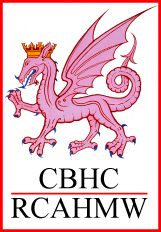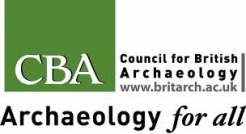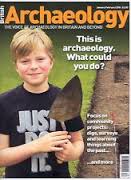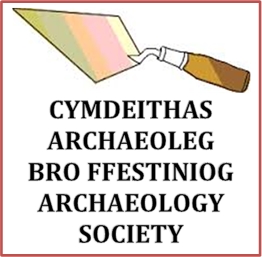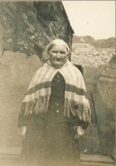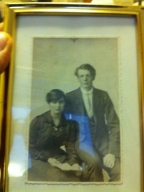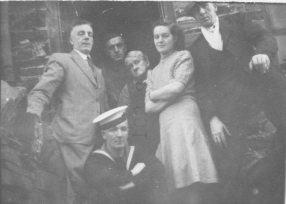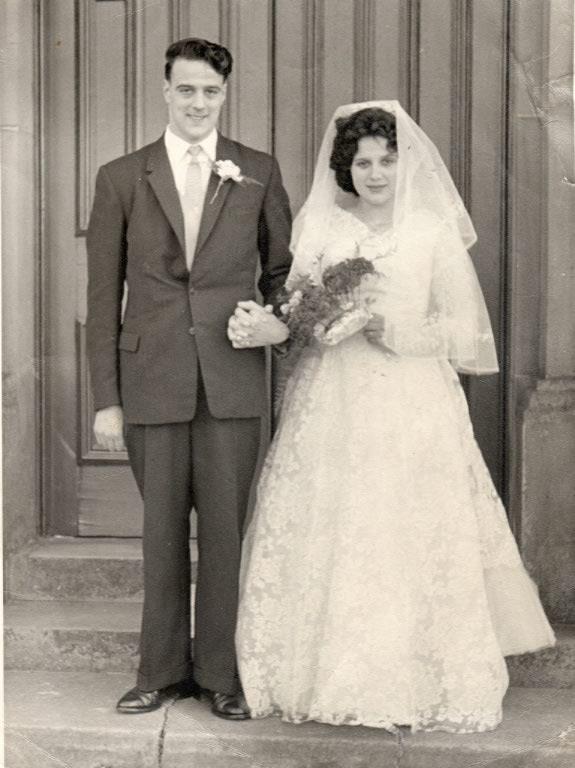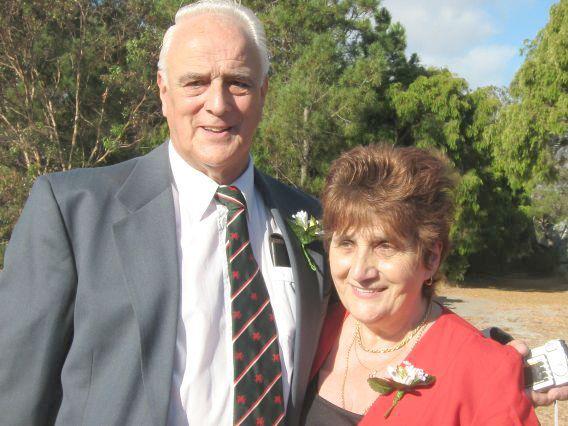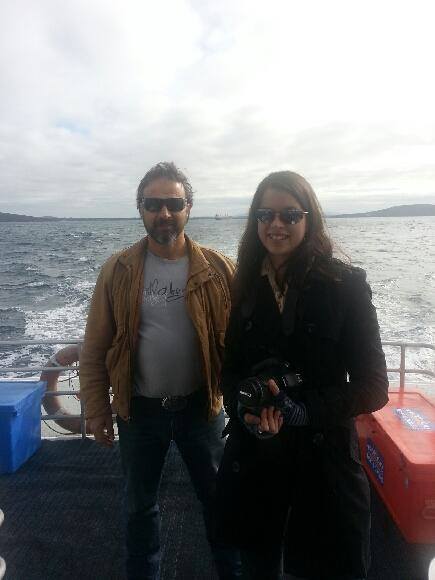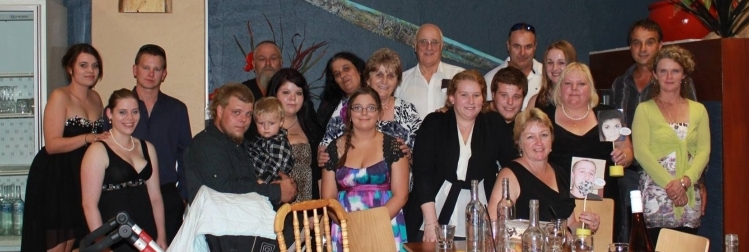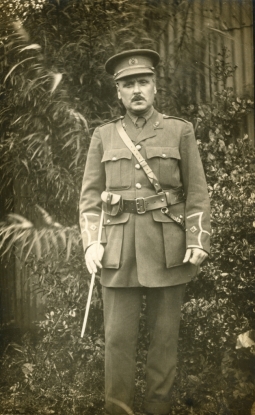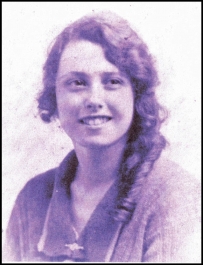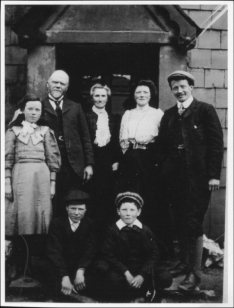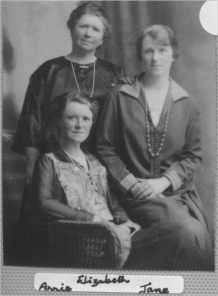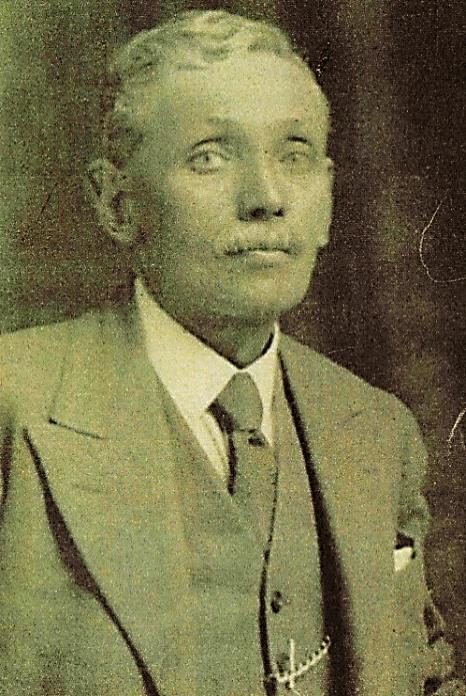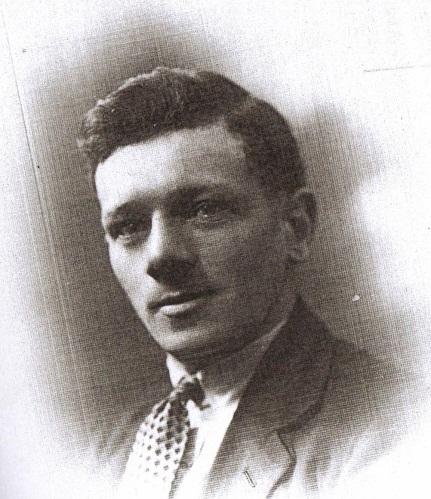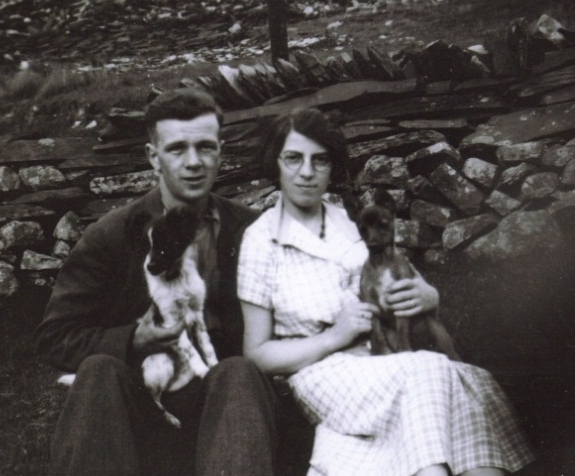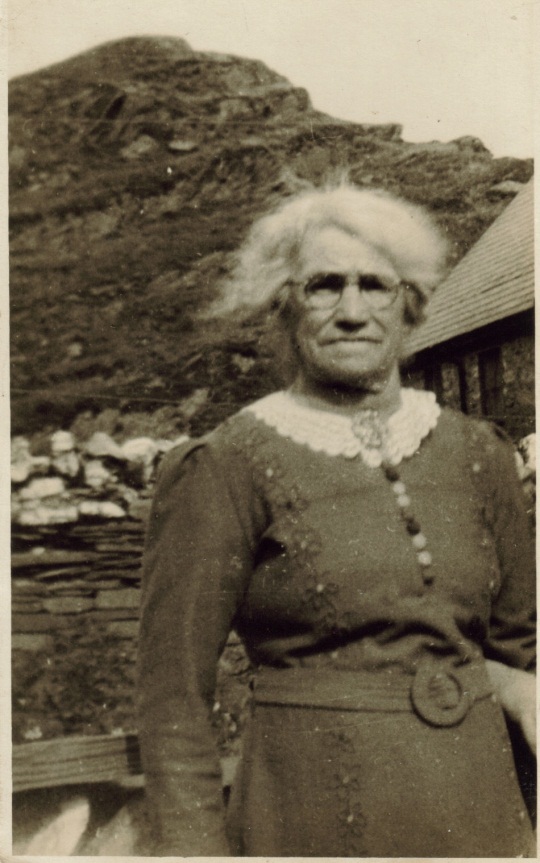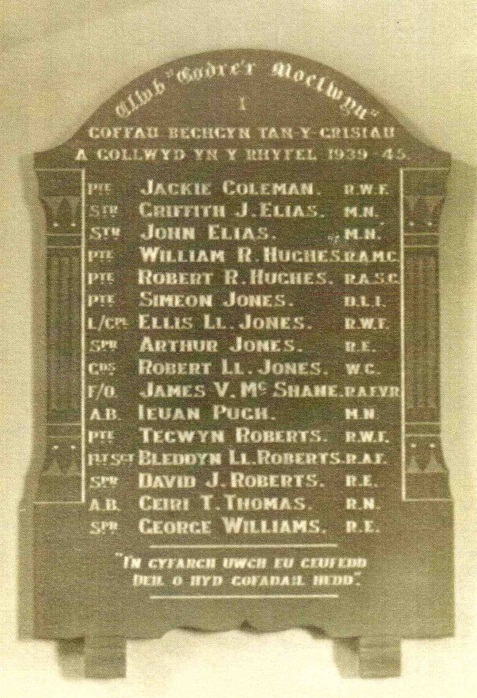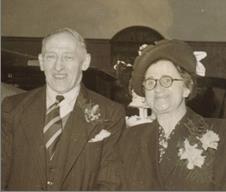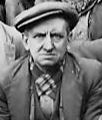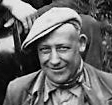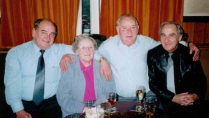The People of Cwmorthin THE FAMILIES The Joneses of Cwmorthin Uchaf By far the most well-known family of the cwm and the oldest family recorded as living there, the Shon Joneses were for their time something of a legend. Oral history, as the following article outlines, has them living there for eight centuries and their longevity is well noted. With only the odd journey out of the cwm to market or for provisions perhaps it was their isolation in a time when life expectancy was around the 40 mark that protected them. Their water would be fresh off the mountain, naturally filtered; in a very rural area such as the parish of Ffestiniog with a population of less than 1000 before 1820 transmission of disease would be limited. The reference to the length of Jones tenancy in Cwmorthin may have originated in an early Welsh gazeteer of sorts published in 1875 called “Cymru” where the author Owen Jones relates a conversation that Sion Jones had heard his father say that his father said that the family had lived there for 800 years. Shon Jonsiaid Cwmorthin / The Shon Jones' of Cwmorthin by Emrys Evans – translated by Catrin Roberts published in edition No51 of the publication Llafar Gwlad in 1996 The opening of four quarries in Cwmorthin led to new houses and two chapels being built there for the quarrymen, but long before the period of the quarries there stood two farmhouses here...Cwmorthin Isa (Lower Cwmorthin) and Cwmorthin Ucha (Higher Cwmorthin). Cwmorthin Isa and its small patches of land has long since disappeared under the slate waste tips, fortunately Cwmorthin Uchaf escaped this fate. It lies to the right of the valley, at the foot of Allt y Ceffylau ( the steep track of the horses) built here, more likely than not, in order to make the most of the sunshine available. It is believed that the lineage of the Shon Jones' family living at Cwmorthin goes as far back as 800 years, with the last of the Shon Jones passing away in 1863 at the grand old age of a 100. The family were renowned for members of the family living to be a hundred, the other being that the eldest son of every generation was named Shon Jones, and hence the family was always referred to as the 'Shon Jones' of Cwmorthin'. The last of the 'Shon Jonsiaid' was a tall bony man, who bore a rural appearance as well as a rural way of life. His appearance didn't concern him in the least. He was a completely illiterate man and his whole world was his farm, the fairs he attended and how to buy and sell his sheep and cattle. The 'Shon Jonsiaid' reared prime sheep and would drive them to Ruthin to be sold. This meant walking them all the way from Ffestiniog, and Ruthin became known by the locals as "Shon Jones' England". With regards to raising their sheep a reflection of their good reputation may be seen when one learns of how a member of the Tan y Bwlch family, who upon insisting that nothing but the very best young animal (llwdn) would suffice for their wedding feast, purchased his animal from the Cwmorthin Ucha farm, for three shillings and a groat. Before the slate industry came into being, those who lived in the area survived solely on what they grew or raised on the land. Very little would have been obtained for these animals. The last Shon Jones to live in the valley said that his father, who had some very good 'Speckled Hens'(Frech) about a year and half old, tried to charge the young summer shepherd boy, half a guinea for one of them. The young lad discussed this offer with his own father, who then went up to see Shon Jones and turned down the offer, it being much too expensive. Even as the last of the Shon Jones' got too old to care for his sheep, he would still visit the sheep pen when the time came for shearing. Saying "Cheap for the good, cheap for the good" on the way towards the pens, and "May God be with them, may God be with them" as he left. Locally it is believed that the first clock in North Wales was the one that arrived at Cwmorthin Ucha farm. Whether or not this is true, it did cause much excitement. People came from all over the local area to see this wonder. It is hard for us to imagine nowadays what this would have meant to them, we have grown so used to clocks and watches etc wherever we go. Shon Jones felt that the children had been honoured to be a part of this experience. On the day after the clock was installed in the kitchen he was asked by his son if he liked it. The reply was "Indeed I do not. This is the most noisy creature I've ever heard. It has been noisy all night long, not stopping for a single minute"! A week later the man who had installed the clock called at the farm to check that it was keeping the correct time and to wind up the mechanism. Whilst he was attending to the clock, Shon Jones asked his wife what the man was up to. "Well making it go" she replied, "Where to?" asked Shon, "Well Shon dear, don't you understand?" the elderly lady said "It’s going to keep the time", "Oh! oh!" said Shon. A while later the clockmaker had finished with the clock and said "There you go Shon Jones, it's fine now, but don't be surprised when it warns you". The elderly Shon got a bit perplexed "Warn indeed" he said "Warn who indeed. No one in this family has ever been warned in this place before! What will something like this be warning us here of I wonder?" The clockmaker reassured Shon Jones that he and his family were in no danger if the clock warned them - it was just that the clock would 'warn' them before striking the hour. Over a period of time, Shon Jones and the clock came to an understanding, although one must admit that Shon Jones never fully understood the clocks movements in its entirety but the conversation, whoever he met, would always be turned to the clock. Once he was asked what the time was, he entered his house to have a look, and the reply that came was "It isn't ", "How is that?" asked his companion.... "Well" he said "they told me that on the clock there is nothing more than twelve o'clock and nothing less than one o'clock, and both hands are between twelve and one, hence we have no time at all." Once, when Shon Jones and his brother walked over to the Llanrwst fair, there being no other means of transport in those days, Shon Jones asked a neighbour how many miles it was over to Llanrwst. "14 miles" came the reply. "Come on then Harri" said Shon Jones "Just seven miles each!". Shon Jones had another brother called Dici, who was not as sensible as most of us. When they went to the Llan Ffestiniog fair, Dici , almost without exception, would start arguing and inevitably fighting with someone, and Shon Jones would be pulled into the incident. Often they would be followed out of the village by their opponents as far as Pen y Cefn, about two miles away from their home, where those who followed them would turn back home and the trouble would have come to its end until the following year. Once when the two were walking back from the fair, past Tanygrisiau farm , their aunt : Catrin Cadwaladr, saw them and asked Dici if he had had a lot to drink, and if he'd been fighting. "Well yes" he replied " I drank as much as the largest bowl in your house, but with regards to the fight I got into, there's no danger of the law getting involved, I hit him ...but not with a closed fist" Later on in his life Dici took to gathering knives of all kinds and sizes, and had a chest full of them when he died. He married late on in his life, but the marriage didn't last very long. His wife took up with another man and they moved away to England to live. Dici picked one of his knives and went after them in the hope of bringing his wife back and killing the man. Unfortunately for Dici he soon ran out of money and had to take on some work corn thrashing for a short while before making his way home. Upon his return home Cadwaladr Owen of Glan'r'Afon Ddu asked him how things went for him on his journey to England. "I'm embarrassed to say" came the reply " I worked with the two wooden halfs and I shan't go thrashing with it again no matter what this old world will bring me, it would come over from this side and the other and hit me on the head each time!". It's no wonder, even though it was a popular mean of threshing at this time, that Dici didn't know how to use the ffust [flails](or the two wooden halfs as he called them), as their means of threshing at Cwmorthin Ucha farm was to thresh what little oats they grew on the old potato strips next to the lake, using washing boards against their barn door. Seeing how the last of the Shon Jones' lived to be a hundred, and his father before him the same bar five years, he had up to about two hundred years of memory all told. His way when reminiscing was to say "I remember my Father saying, having heard my Grandfather say...." and then carrying on relating the memory. Some of these memories gave an insight into their lives back then. He once said "I remember my Father saying, having heard my Grandfather say, that a gentleman lived at Tan y Bwlch (now Plas Tan y Bwlch, Maentwrog), and that one Sabbath day morning he'd asked his servant to go to the Llan church to see if he could spot the Rhiwbryfdir man, and tell him to bring him some money the following week. Upon the servants return the he was asked what the reply was. The servant said 'He said that he had no money and that you must come over to fetch some of the animals that he has there if you want something for your land.' 'That won't do 'said the gentleman, 'Go there again and tell him that he must try and get some money together for me. I want 17 shillings to go to London next week'. " Another time there were a couple of men making their way through Cwmorthin heading towards Croesor and Nanmor to the west, one of them had a letter to give to someone in Beddgelert. Shon Jones saw them and then saw one of them turning back. His companion went over to talk to Shon Jones whilst he waited for him. Shon Jones enquired as to the reason why the man, known as Huw, had turned around and gone back the other way. His response to this was "Heavens above! There is such a fuss with things like this! I remember a time when there only three people who could even do a letter in our parish - Hwmffra Bwmffra, from Glan y Pwll , someone over at Plas Meini, and William Dafis, John Dafis' son, from Cae'r Blaidd." The Shon Jonsiaid' of Cwmorthin came to the end of their lineage when the last Shon Jones died in 1863. The valley lost its King, and this was how Shon Jones saw himself. Quarry men lived here for a while before they all moved away and Cwmorthin Ucha was left to become a ruin along with the quarry buildings. Descendants of Shon Jones have been traced to Australia. I wonder what Shon would say! |
The actual clock – still working and still in the family Made by John Minshull, Clockmaker, Denbigh 1835
Nell and Harry Jones
Front: Harry Jones; Back (from the left): Harry “Cwmorthin” Jones, Wil “Handal” Jones, Mary Ellen Jones, Mair Jones, and Ellis “Tal” Jones
Bill a Mags Jones wedding photo.
Now living in Western Australia
Adrian son of Bill with Jordan Jones
Part of the Aussie "Shonjonesiaid"
|
Sir Evan Jones Evan Jones was an entirely self-made man. Born in 1867, he began his career aged fourteen as a slatemaker at Maenofferen quarry. In 1889 he became a rockman and in 1897 worked at Groesyddwyafon quarry to the east of Ffestiniog where he had training under John Strick CB. Jones attended night school under the auspices of a Mr Johnson of the Oakley quarry and was taught Geology by John Griffiths later of Dolgellau County School. His studies bore fruit and he was made a member of the Institute of Mining and Mining Engineering becoming agent at Groes for a few years before the quarry closed. It was during this period that he became involved in establishing the playing fields at the then Ysgol Sir Ffestiniog, now Ysgol y Moelwyn. He was appointed manager of Rhosydd in 1906 and moved to live at Plas Cwmorthin As agent he was enterprising and energetic, and was defeated not by any shortcomings of Rhosydd or of himself, but by economic facts. After Rhosydd closed he returned to Groes. But he had other interests too. During the First War, with the rank of captain, he commanded a Welsh Miners Tunnelling Company in France - believed to be the 183rd Tunnelling Company in which there could well have been other Ffestiniog slate miners. He was twice mentioned in dispatches but details of the two incidents have yet to come to light. Existing War Diaries for the 183rd require checking – National Archive WO 95/406 Sir Evan had married Anne Roberts in 1898 and on the 26th of October 1900 a son – David Morris Jones – was born. Tragically, Anne died on the 18th November believed to be due to complications during childbirth. She was only 30 years old. At this time they were living in Station Road, Ffestiniog a short travelling distance from Groes quarry and David was cared for by Anne’s sister Ellen. Sir Evan married Ellen and Anne’s sister Mary in July 1905 shortly before moving to Cwmorthin. She was with child when they moved and daughter Ellen Anne Jones was born in February 1907. It was at the Plas in 1926 that he completed his paper “The History of our Rocks and their Development” for which he was awarded a fellowship of the Institution of Quarrying. The cover (pictured below) courtesy of Dafydd Jones They continued to live in the Plas until 1931 when they left due to the poor health of his daughter Ellen Anne. Ellen died in July 1934 at the young age of 27. Sir Evan and Lady Mary are fondly remembered by their niece Jane living now in Edinburgh. The following is a passage from the work of local historian Robin Price, formerly of Tanygrisiau now of Preston relating Jane’s memories of them "I was fifteen when my great Uncle Evan died in 1949, so my memories of him are those of a child. He and great Aunt Mary came to visit us regularly at Tan-y- Ffordd - in the house where I was born in Rhoslan, a small hamlet a mile out of Tudweilog. “They came in a chauffer driven car, which impressed me greatly. There were few cars in Tudweiliog then. The chauffer's name was Mr Jones. “Uncle Evan always smiled as he came but Auntie Mary always looked rather severe. I realised years later that she was probably already suffering from Parkinson’s disease. She was a very beautiful woman, tall with a mass of white hair and large brown eyes. “Uncle Evan never seemed to alter apart from putting on a bit of weight. I think he must have been very handsome as a young man. There was a picture of him in Bryn Meirion, dressed in his army Captain's uniform. After he and Auntie Mary had died the picture hung in Auntie Nell's house- Auntie Nell being Auntie Mary's youngest sister. “A couple of times a year my mother and 1 used to go and stay with her sister Jenny (Griffiths) who lived at Tanygrisiau. “We always went to visit Auntie Mary, Uncle Evan and Auntie Nell. Then we would go and see ‘Dei Mor’ (Syr Evan's son by his first wife, Ann) and Auntie Bessie in Arael (Llan Ffestiniog). “As the years went by Auntie Mary's illness became worse. At first she would be sitting in a chair but eventually she was confined to bed. Even when we arrived she would ask 'Have you been a good girl since I saw you last?' “The next question was usually 'Have you learnt your verses for next Sunday?' After that I would have to recite them to her. Uncle Evan would ask what books I had read recently. “I have always loved books and don't remember learning to read. He was very kind and every so often used to send me books, which I much appreciated. Once he took me to the library and said to have a look at the books and to take any I liked. I chose a couple, which I still have. “Sometimes Uncle Evan would take us out by car .1 particularly remember going to see Harlech Castle. I had never been there before and he told me a lot about its history. At other times we would go for a walk around Llan “He would come and stay with us in Tan y Ffordd in the summer. Auntie Nell would look after Auntie Mary at those times. I imagine he needed a break sometimes. “We would go to a local beach, called Porth Big and look for cowrie shells. They were quite small and very difficult to find. I remember Auntie Nell telling me that she and her sisters used to do the same thing when they were children -'Everything changes and everything remains the same' “In August 1943 my family moved from the Lleyn Peninsula to Liverpool but my mother and I still visited Tanygrisiau every so often and to Llan Ffestiniog of course. “As I get older I remember things that Uncle Evan used to say and one in particular – “Mynd yn hyn ond ddim yn hen” – “Getting older but not old”. I try to live to that. I was sad when the phone call came to say he has died. He was a great man and a very kind man. I loved him” Sir Evan was active in local politics: at various times chairman of the Ffestiniog UDC and of the County Council, Sheriff of the county, Deputy Lieutenant, JP; and it was for this work that he was knighted in 1935. He died aged 81 in June 1949. Lady Mary died in March 1953 aged 84. |
|
The Phillips Family In the Cwmorthin Quarry estate Rent books for 1902 we have John Phillips listed as the householder for Cwmorthin Isaf , although there are reasons to believe that the actual abode was Cwmorthin House (Plas Llyn). The 1901 census shows a David Jones listed as living in a dwelling called “Cwmorthin” which in the 1902 rent books is clarified as being Cwmorthin House. Neither person is mentioned in the rent books until 1910 when John Phillips is renting Cwmorthin House. John Phillips was born in Bala on the 26th September 1852 and married Elizabeth Owen of Muriau Bychan, Trawsfynydd in June 1875. He became a quarry manager at Cwmorthin Quarry in early 1902 and lived in the valley until his death in 1910. John and Elizabeth are recorded in 1901 as living in Madoc House, Trawsfynydd with the census listing John as a slate quarry steward and having eight children. In age order they were: Annie Phillips, 23; Elizabeth Phillips, 20; John Phillips, 18; William Owen Phillips, 16; Robert Edward Phillips, 12; Tudor Owen Phillips, 9; Jane Winifred Phillips, 6 and Azaraiah Phillips 2 Their first child William was still born in 1876 whilst the family were living in Muriau Bychan, and Margaret Jane died of measles aged about eight months, according to her gravestone and the burial records at St. Madryn church, Trawsfynydd, in 1886. The photo above (courtesy of Keith Phillips) shows the Phillips family standing at the doorway of Cwmorthin House. They are – John Phillips, Elizabeth Phillips, Annie Phillips and John Phillips (Jr) at the back with Jane Winifred Phillips to the left of her father John Sr. with Robert and Tudor sat on the front step. One of the brothers was killed during service in the Great War. Azariah (pictured right) was a Lieutenant in the Royal Flying Corps and died as a result of an accident in a BE2 aircraft at Old Sarum airfield near Salisbury on the 11th of January 1918. He was an instructor at the base and the trainee pilot failed to avoid a W/t mast whilst making his approach to land. Corporal Robert Edward Phillips of the 2 Btn Royal Welch Fusiliers died whilst in Limerick during the Irish War of Independence on the 24th of June 1919. William died in Aston, Birmingham on 22nd November 1918 with his brother John at his side. He died of influenza and double pneumonia as a result of the Spanish flu outbreak in 1918 which killed over six million people across Europe. Upon John senior’s death Elizabeth and the family moved to Bowydd View, Blaenau Ffestiniog. |
The Phillips family at Cwmorthin House
|
The Williams Family – Plas Llyn In 1926 when the Oakley Slate Quarries Co. Ltd decided to re-open Cwmorthin Quarry Thomas Williams was appointed under-manager. As part of the contract it allowed him and his family to reside at Cwmorthin House – Plas Llyn – where they moved to that same year. Thomas Williams was a native of Llanddeiniolen in Caernarfonshire and was born in 1872 as the third child of John and Elizabeth Williams. In the early 1890s he married Elizabeth Janet Jones of Penmachno and in 1901 lived in Dolwyddelen from where Thomas, as a lay preacher, would move around the area in his pony and trap to preach at various chapels on Sundays. Elizabeth must have been a remarkable woman, giving birth in 1896 to her first child – Margaret Annie – at the age of twenty four and seventeen years later celebrating the arrival of Hugh - her eleventh. In between came Elizabeth (1897), John Owen ((1898), Catherine Jane (1899), Sarah (1901), Hannah (1902), Thomas (1903), Blodwen (1905), Mary Ellen (1907), Robert (1910) and finally Hugh in 1913. Sadly Sarah died aged twenty months in December 1902. Sometime around 1910, probably due to the poor state of the slate trade, they moved to County Durham with their nine children and stayed for a while with one of Thomas’ brothers. Twelve year old John Owen was sent to work in a coal mine handling pit ponies that hauled the coal drams underground. Descendant Wilfred Thomas Williams of Llandudno indicates that they returned to Blaenau Ffestiniog by April 1911 with all the children and resided at Bryn Dinas, Rhiwbryfdir. When Thomas took up the post of under-manager it is unclear how many of the children resided at Plas Llyn.. Electoral records name the parents Thomas and Elizabeth, together with daughters Elizabeth and Mary Ellen. Thomas jr lived there until his marriage in December 1930 Sons Robert and Hugh would also have been living there aged sixteen and thirteen respectively. The two eldest daughters Margaret Annie and Elizabeth went through life unmarried. Elizabeth died on 18th May, 1957. John Owen Williams (left) married Nellie Blodwen Jones in April 1930 and are the parents of Dewi Price Williams and Wilfred Williams. Wilfred and his wife Eileen are the grandparents of Ceinwen Gwilym the three of whom have been invaluable in outlining the history of the Williamses of Plas Llyn. On 22nd January 1932 the owners of Cwmorthin Quarry announced its closure and Thomas received a letter to announce this. It read: “The Directors at their last meeting decided to close down all operations in the Cwmorthin Quarry. “I am instructed by Mr Parker to inform you that your services as a quarry official will not be required any longer after the 30th of this month. It is with regret that they learn that your health does not permit you to be employed elsewhere. “As you are now stationed in the Company’s house at Cwmorthin you will be allowed to live at this house at a nominal rent of one shilling per month, and if you undertake to act as Caretaker and Overlooker of the Company’s property around Cwmorthin, a salary of £2 per week will also be granted, both subject to the Company’s pleasure. May I add that I shall always try and find work for your son Robert, while he lives with you. “Personally I much regret to part with you as an official, but present day circumstances of trade and industry makes this inevitable at present.” By this time Thomas was aged 60 and as stated in the letter not in the best of health. According to electoral records he was still resident in Plas Llyn in 1933 but passed away on the 21st April 1933, followed on the 10th October by his dear wife Elizabeth. His son Robert had met Carwenna Elias of Tai Llyn during his working life at Cwmorthin as his wife-to-be helped her mother keep shop at No1 Tai Llyn (Cwmorthin Terrace). They were married in December 1933. They had one son, Glyn Orthin Williams who married Gwenllian Williams and had four children Richard Glyn Robert Orthin – who lives in Mochdre, Gwenda Wyn – now living in Ireland and John Gruffydd – living in Llanrwst | Thomas Williams
John Owen Williams
Robert and Carwenna
|
Elias/Pugh family of Tai Llyn The marriage of Robert Williams to Carwena Elias mentioned in the brief history of the Williamses of Plas Llyn makes a neat connection to their neighbours over in Tai Llyn – originally known as Cwmorthin Terrace. Carwena was the daughter of Margaret “Maggie” Elias, pictured right in her later years Maggie Jones and William Elias were married in the spring of 1895 and their first child William Owen Elias was born two years later in 1897. Then followed a series of tragedies as Owen in 1899 and Richard in 1900 both died soon after being born and Ruben died one year after his birth in 1902. John Elias was born in 1904. Shortly afterwards Margaret’s husband William died in December 1904 at the young age of thirty-three leaving Maggie to bring up the family. Born in 1909, Carwena was given the family name of Elias in the 1911 census although her birth surname was Jones. Another son Griffith Jacob Elias was born in September 1915 this time with no Jones as surname. Although not confirmed, In 1925 she seemed to take on the surname of Pugh. Tragically both John Elias and Griffith Jacob Elias were killed on 10th March 1941 when their merchant ship the SS Corinia hit a mine in the Straits of Dover. John was the 2nd Engineer and Griffith was a fireman and five other crew members were also lost. The Corinia was part of a steamer coastal convoy running from Blyth and Sunderland to ports in the Portsmouth area carrying coal. Two other ships the SS Waterland and the SS Sparta also hit mines with the former losing four of her crew. John and Griffith’s names can be found on the Tower Hill Memorial commemorating merchant navy and fishing fleet casualties that were lost at sea. Their names are also on a plaque in, Tanygrisiau Primary School. She died on 17th January 1956 aged 80 and her gravestone carries the name Margaret Elias Pugh
Carwenna Williams recorded a little about her life in the valley during a BBC Cymru programme “My grandmother was the first in our family to go and live in Cwmorthin. She went up there to live when my grandfather started work at the Wrysgan Quarry. We lived above the Stables at Conglog until the houses were ready, and it was there that my grandmother gave birth to two of her children. She kept a shop and baked bread as well, and my Grandfather would take the bread; and tobacco of course, to the men who stayed up at Wrysgan. The shop was at Tai’r Llyn (the Lakes houses’); it was home to ten children as well as me, which is until I left the Cwm to be married at 23 years old, just a week before my mother died. Hardly anyone lived there when I was a child, although I do remember a family named Griffiths living in the first house and some others in the second house called Sprague, though I don’t know if Sprague was the house or family name. The rest of the houses were barracks. No one lived at Conglog, and only one lady lived at Plas, a Captains daughter, later on Sir John Evans lived there. There were two chapels, Methodist and Congregational, but you had to walk down to Tanygrisiau to go to the school. Morris Cwmorthin lived at the house closest to the lake; he kept sheep and always looked untidy. Morris would get up at 4.30 every morning to go and attend to his sheep, I’d hear him shouting whilst sat astride Charles his horse. He had four children and they would help him with the shearing. My Uncle was the only one to live and work up at Cwmorthin, all the other workers would walk up to work. Later on my husband’s Father came up there to live and stayed for five years. He was the mine level timekeeper; there was another in the engine (mill) where the slate was hewn. The postman would call every morning with letters for us at Tai’r Llyn, as well as the other nine houses where the quarrymen’s barracks were and the horses’ stables. We’d carry the water from a pipe at the end of the street, but food, coal and shopping would have to be fetched up from Blaenau. My Grandmother would keep over a hundred hens and a horse, and she would go down to the post office in Tanygrisiau with the eggs in a basket to help pay for our food. Over the summer many would come up for a picnic, getting their hot water to make their tea from my Grandmother. Others would come up to fish. In the winter the lake would freeze over, and my Grandmother could remember a horse with a cartload of flour crossing to the furthest end of the frozen lake in order to get to Cwmorthin Uchaf. Some would come up to ice-skate by the light of the moon, but I wasn’t allowed to do that. My Uncle would get up at 5 in the morning in order to walk over the tops to the Oakley quarry, although there was a tunnel that went straight through from Cwmorthin. The Congregational chapel was named Tiberias, and my grandmother used to say that that was the name of the lake as well at one time. She would tell us the tale of some man coming over from Croesor “Wel dyma gymorth –in” (“Well here’s a comfort –for us”) and this is how the valley got its name ~ Cwmorthin. The other chapel, the Methodists chapel, was about a mile away from the Plas. I saw ghosts there once. It was about a week before we were married, Bob had come to Tanygrisiau to live and we both set about getting the house ready at Dolrhedyn. It was a Friday evening about late November, and after we’d got everything ready about eight or nine o’clock in the evening Bob walked me home. As we left Dolrhedyn and a slight fog came down I asked Bob “Who are those two just ahead of us?” “There’s no-one there.” came his reply. I thought that the two of them walked on ahead of us all the way, but Bob saw no-one. “Well yes there is!” I said. “What do they look like?” he asked. “Well mackintoshes as if they were going fishing, hats on their heads and carrying bait. They must be going fishing”. They kept the same distance from us all the way up the road. When we got midway up the hill Bob said “Come and sit here a while and let them go on ahead, that way they won’t be watching us all the time”. So we sat on the side and they stood still. As we re-started, they moved on ahead. By this time we’d reached the level area and I’d well and truly frightened Bob. As we reached the bottom of the incline leading up to the house he suddenly turned to me and said “Listen, I’m going to go home now, you have some company”; and off he went home leaving me standing there. The two in front of me were still there until I reached the top of the incline where they just disappeared. What else could they be but ghosts? One must remember that in years gone by seeing ghosts was considered to be a sign of death. When we were living in Tangraig, Bob by then a shop keeper, wanted some of his paperwork to do the accounts. “I’ll go to the loft” I said “That’s where they’ll be”. When I got into the loft, there was a man stood by the wardrobe. I went down stairs much quicker than I went up them. “What’s up with you?” Bob asked, so I told him “There’s someone stood by the wardrobe in the loft, he hasn’t got any legs but he was stood there.” “Your mother won’t be long on her way then.” was his reply. My mother had been bedridden for three years following a stroke, and it’s true that she died not long after this incident. After living in Manod for ten years I went back to Dolrhedyn to live, and it’s ten years or more since I last went up to Cwmorthin. | Maggie Elias / Pugh
WW1 memorial in Tanygrisiau school notes the death of the Elias brothers
|
The Thomas family of Rhosydd Terrace and Cwmorthin Uchaf Evan Thomas and his family first appear in the 1881 census as living in 2 Cwmorthin Uchaf*. Evan Thomas aged thirty-seven was by then a quarryman but the family’s origins were as farm workers who moved eastwards from the Lleyn Peninsula. They are recorded in 1871 as residing in Brynllydan just outside the Croesor valley, easily within reach of Cwmorthin. His wife Margaret aged forty-two in 1881 was born in Llanddeiniolen and they brought with them four sons and a daughter. Llewelyn Thomas was the eldest at eighteen and he had two younger brothers John, thirteen and Griffith aged six. Ten year-old Jane Elin, was the only daughter and was born in 1870. The census also throws up something of an anomaly as an Evan Jones is also listed as a son aged twenty-one. If this is not an error then it is likely that he was a son only to Margaret. Evan Thomas died in early 1886 and the 1891 census shows his widow Margaret living at Dolydd Terrace in Tanygrisiau with her daughter Jane Elin who was by this time married to a David Jones. They had a daughter Jane born nine months before the census. Griffith Thomas also lived with them By 1891 Llewelyn Thomas had married Margaret Jennet Williams from Bala and resided at 4 Tanrallt Terrace (Tai Conglog) and had two sons; Evan Ellis (pictured right) aged six and John Llewelyn aged two. Two more children were added to the fold – in 1892 a daughter, Elizabeth “Bessie” Thomas, and a son David William in 1899. By the time the 1911 Census was held the family were living in Foundry House, Tanygrisiau together with Margaret Jennet’s father John Williams then aged seventy-eight. John Llewelyn married Emily Roberts and had four children. The photo below right shows them at the wedding of their youngest son Rheinallt The eldest a daughter Dorothy, but called Doris, was born in 1920 and married Stanley Williams. They had two sons, Raymond and Hugh and a daughter Eirian, Doris died in 2009. Iorwerth was the eldest son born in 1924 and he married Jennie May Jones with whom he had two children – Melfyn ap Iorwerth and Valmai. Mel is the author of this document. Iorwerth died in 1999. Evan Llewelyn Thomas was the second eldest son, born in 1930, and married Megan Thomas and they had one daughter, Wendy. Evan died in 2013
Rheinallt was the youngest of the four, born in 1932 and he married Eirwen Roberts. Their children were son Malcolm and daughter Maureen. Rheinallt died in 2012
Griffith Thomas ???? John Thomas surfaces in the 1911 census in Penrhiwceiber, South Wales after moving to find work in the coal mines of the area. Although not found in the 1901 census he will have, by 1911, been working down the pit for some time as he is employed as a Fireman - normally experienced miners. A Fireman, also known as Deputy, would be a supervisor responsible for testing for gas as well as managing the men in his section of the mine. He would also be a shot-firer when required. He was then aged 42 and his wife Catherine was forty years old. His son, Evan Thomas was eighteen and was also a coal miner – a coal hewer specifically – as was his brother Edmund Llewelyn at sixteen years old. Younger brother John Lloyd was six years old and in schooling. Evan (pictured above) was to return to the Ffestiniog area and resume work in the quarries, working at Cwmorthin Quarry in the 1930’s. He married Ellen Morris of Trawsfynydd and had five children Katie, Ieuan, Robert Meurig and twins Sally and Megan. Katie married Tom Crampton; Ieuan married Buddig Jones who died early 2011 leaving son Richard and daughter Lowri, Ieuan having died in xxxx. Robert Meurig, or Mim Twm as he was known, married Gwenda Ellis. They had two children – daughter Elaine, and son Gareth who is now a well-known Welsh singer-songwriter (Gai Toms).” Sally married David W Thomas and had one son Gary. Sally died in 2008. Megan married Evan Llewelyn Thomas, and have one daughter Wendy. Evan died in 2013 The farmhouse of Cwmorthin Uchaf was split into two dwellings sometime between 1871 and 1881 |
Evan Ellis Thomas
Evan Thomas
Evan Llewelyn, Dorothy (Doris), Iorwerth a Rheinallt |
The Roberts Family of Tai Llyn Robert Roberts was born in “Ysbytty, Denbighshire” in about 1850/51 and by the census of 1871 is shown as being 20 yrs old and lodging with the family of William Owen in Llan Ffestiniog. On 27th. March, 1875 he marries Margaret Roberts at Bethesda Chapel, Ffestiniog. At this time, Robert is shown as being 26 yrs of age, a bachelor, working as an engine driver and living at Maenofferen. He is shown as being the son of Robert Roberts (deceased) a mason. Margaret is shown as being 23 yrs of age, a spinster also living at Maenofferen and the daughter of Owen Roberts, an agricultural labourer. By the time of the 1881 census, the couple are living in the High Street with a daughter, Maggie A and Robert’s brother William who’s shown as being 27 yrs old, unmarried and working as a clerk. Robert at this time is shown as being employed as a “Railway Man”. At the time of the 1891 census, the family are living at 5 Cwmorthin Terrace. Robert’s occupation is now shown as “engine driver” and his wife, Margaret, is shown as being born on Anglesey (Llangefni). By this time, they have three children, Maggie Ann (15 yrs), Elizabeth C (8 yrs) and Annie (2 yrs) (pictured left) 1901 is the last time we find Robert and his family at Cwmorthin Terrace. By this time they are living at No.9 and Maggie Ann has left the home, she may be married by now. The other two daughters are still at home, Elizabeth Catherine is now 18 yrs., Annie is 11 yrs and they now have a son, Samuel Owen aged 8 yrs. Interestingly, by this time, some other details have been clarified, in that Robert is now shown as being a “stationary engine driver” and Margaret is shown as being born in “Cerrigceinwen, Anglesey”. By the census of 1911, Robert and Margaret are living at 137 High St. The record also shows that they’d had 7 children in all but that 3 had died. Robert is by now 60 yrs. old and Margaret is 59 yrs. Of their 4 surviving children, research is still ongoing where Maggie Ann is concerned. However, Elizabeth Catherine married Humphrey Thomas Edmunds in 1903 and eventually moved to the USA to live. In 1929, Samuel Owen moved to the Rhondda where he married Nell and spent the rest of his life working in the coal mining industry. Annie married Thomas Jones (originally from Llandudno) and raised their family in Blaenau, living in Church Terrace. The family worshiped at St. David’s where Thomas was the bell-ringer for a number of years. |
The Joneses of Plas Llyn - 1942 Margaret Farley (nee Jones), now residing in Birkenhead, remembers the house very well. It had a massive fireplace and elaborate wooden panelling which was robbed out when the house finally became empty. Life in the cwm, even in the 1940’s was quite harsh, especially in the winter months. To get to school in Tanygrisiau meant a long walk, especially for those living in Conglog. She remembers “When we were ready to go we would keep an eye out for the Conglog children and meet up at the head of the lake to begin the trek down. We would keep our school shoes at the bottom of the track and change into them on the way down. “In winter we would quite often reach the school in a very wet state and sometimes late due to heavy snow but the headmaster would kindly take our shoes and socks and dry them by the fire so that we could at least start home in dry footwear. “The coalman would leave four bags of coal at the foot of the road and my two brothers would carry one each up to the lake and go back for the other two then the Conglog family would come by cart to pick up their two bags. The photo (left) shows the siblings William (back left) and Wyndham (back right) with sisters (l to r) Nansi, Katie and Margaret TO BE CONTINUED |
The Williamses of Conglog Peggy lived in Betws-y-coed until her death in 2013 and recalled life in the far corner of the cwm Our first home was in a row of houses at the furthest end of the valley at the bottom of the hill leading up to Rhosydd and Croesor. We were a family of eleven, my Father and Mother and nine children; and the house was overcrowded. After a while we had the house next door, and so had two houses to live in. My Father and my brothers worked at the quarry, as well as this we had a little farm where we kept four cows, two pigs and chicken. We’d grow potatoes and vegetables, and gather grass for the animals in the winter. We then moved to the big house, we called it the Plas, where Sir Evan Jones, the works manager lived, he thought a lot of himself. Every Friday his shopping was left at a house in Tanygrisiau and we’d have to carry it all up for him, including four large loaves, double the size of the ones we have nowadays. We’d share the load between us and make a start on the steep two mile long road home. Ponies carried the coal up. A half ton of coal would be left at the bottom of the hill and then my sister and brothers would halve the coal before loading it onto the ponies’ backs. At the top of the hill there was a horse and cart waiting to take the load to the end of its journey. It was hard work always having to halve the load and carry it up to the end of its journey. As a child living in the Cwm could be quite lonely; but as there was a crowd of us I never felt lonely and the lads would come and play with me when they came home from school. During the summer the shearing day was always a big occasion. The people who owned the sheep would come up, the ladies would prepare the food and we, the children, would mark the sheep. Some would come and fish the Cwmorthin Lake by boat and when we came home from school we’d have a lift home across the lake in their boat. We’d be sure of a cup of tea and a piece of cake from the men at the boat shed. There wasn’t a chapel or anything else where we lived, although there was a chapel down in the Cwm. It’s regretful to see it today with no roof. Cwmorthin and Wrysgan quarries were still working at that time. We’d take milk up to the quarry on the way home from school so that the quarrymen could have a cuppa. Not all the men lived up in the Cwm, some came every morning up from Blaenau and many of them worked on the quay working the slate. When it was New Years day we’d get up early and go and greet the men. They knew us well and would shout “Calennig, calennig” to us. It was a happy enough life for a child, but awful in the winter, with the mist covering everything and everyone at times for days in a row. But it was lovely in the summer with people walking over to Rhosydd and to Croesor. It didn’t seem to be a hard life back then but it must have been tough. There was plenty of work to be done, gathering stones, helping in the grass field and feeding the cows that were in for the winter. I left the valley when I was fourteen years old and I wouldn’t like to live in the valley as it is nowadays. |

